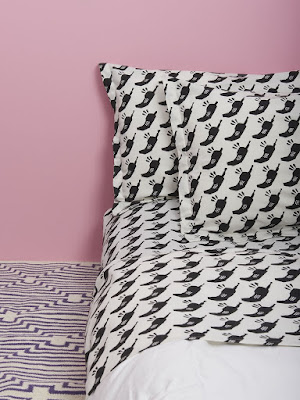These a number of contacts I feel would be beneficial for me to have within the creative industries. Most of these are illustrators or creative practitioners that I admire and would like to understand more about their practice or independent publishers, clothing and homeware brands that I would love to either collaborate with or run a similar business to in the future.
Wrap magazine
Founded by designers Chris Harrison and Polly Glass, Wrap produces a biannual print magazine and sells a collection of paper products made by a range of illustrators on their online shop. I think this would a good point of contact simply because this is a context in which I would love my work to be featured in the future - on both paper products and in a magazine like wrap that focuses on contemporary illustration. It would also be interesting to find more about how the founding of wrap came about and the ins and outs of running an independent magazine.
Poketo
Poketo is a lifestyle brand that focuses on instilling beautiful design into everyday living, selling a range of products from stationary, publications, homewares and clothing. They work with designers, artists and illustrators to create their own products, as well as collaborating on projects with big-time companies such as Nike, MTV and Disney. The founders, husband-and-wife team Ted Vadakan and Angie Myung, I think would provide a very useful insight in how to start up and run a successful brand - as well as hopefully be a good point of contact for future collaboration.
Atelier Bingo
Atelier Bingo is a partnership formed of Maxime Prou and Adele Favreau producing illustration, graphic and surface pattern design. Their work focuses on the use of bold shapes and colour to create abstract imagery primarily using print based processes. I think this collective would be a good contact because the core principles of their practice and client base - featuring creatives and companies such as element, urban outfitters and Wrap magazines - reflect the direction in which I would like my own practice to develop in the future.
Slowdown Studio
Marc Hendrick created slowdown studio out of love for playful prints and patterns - a project in which he collaborates with selected illustrators and artists to produce limited runs of woven blankets. I think it would be interesting to find out why he selects particular designers and illustrators, as well as how the collaborative process between him and these artists actually functions. I feel that speaking to Hendrick would also be useful for gaining a better understanding of how to successfully produce and distribute illustrative homeware products within an independent, small-scale business.
Gorman
Lisa Gorman founded this clothing brand in 1999, based out of Auckland, New Zealand. I am primarily interested in her collaboration with creative practitioners such as Atelier Bingo, and the process through which they develop the final clothing designs. The general ethos and aesthetic of this brand I think also correlate really well with my own personal opinions and tastes. I think finding out how Gorman developed and successfully ran this brand for 18 years would be really valuable experience.
BfGf
Bfgf is an art brand, run by Lilian Martinez in LA. I think it would be really beneficial for me to talk with her about how she runs her business - mainly the production and distribution of her products. Personally I would also like to know more about the inspiration behind her practice, as well as her participation in collectives and creative events.
Dusen Dusen
Ellen van Dusen textiles' brand uses bold colour and geometric shapes across a range of clothing and homeware products. She collaborates with other creative practitioners to create products for different brands and companies, as well as for her own. I think it would be interesting to hear more about her creative practice and the running of this business.
Yucca Press
Yucca press is an independent risograph printing and publishing press based in Peckham, set up and run by designer Daniel Fletcher. Handmade and print based processes being central to my work, I think small, independent press' like this that support young and emerging creatives will be essential to the future of my practice. I am also just interested in finding out more about Fletcher's practice and how he came to find success within the creative industries.
Hato
Hato is a creative design agency based in London, that also runs Hato press - a risograph printer and publishing house. I think this would be beneficial contact for the future as I am interested in producing zines as a part of my practice. It would also be valuable for me to learn more about Hato's practice as a design agency - working for clients such as facebook, asos and urbanoutfitters.
Aelfie
Aelfie is a home goods company based out of Brooklyn, New York. I really like their approach of creating contemporary products focusing on beautiful design and crafting using traditional processes. I think their graphic shape-based designs correlate really well with the principles of my own practice, and again I think this would be valuable contact to understand more about how to run a small independent homewares business.









































